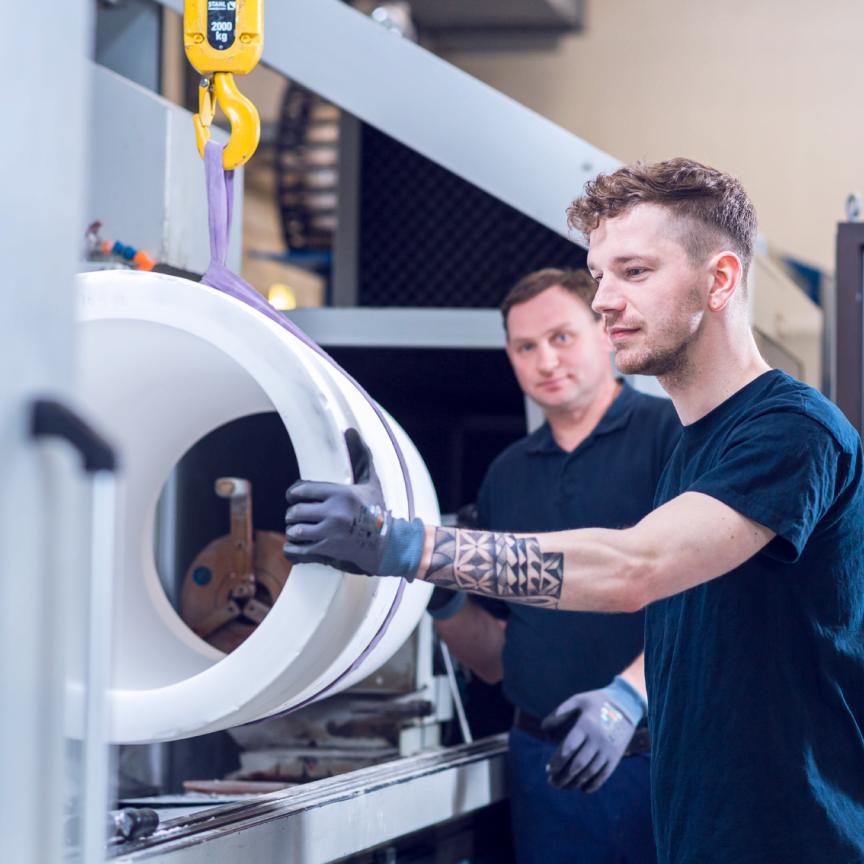The UK’s Science and Technology Facilities Council has added two microscopes, a stimulated emission depletion (STED) and a Scanning Transmission Electron Microscope (STEM), to its research centres in the UK. The new instruments will allow scientists to probe deeper into the fields of life sciences, advanced materials, healthcare and power generation.
One of only three in the world, the £3.7 million Nion Hermes STEM instrument is housed in the Engineering and Physical Sciences Research Council's (EPSRC) SuperSTEM facility at Daresbury.
Scanning transmission electron microscopy (STEM) involves scanning a very finely focused beam of electrons across the sample in a raster pattern. Interactions between the beam electrons and sample atoms generate a signal, which is correlated with beam position to build an image where the signal level at any location in the sample is represented by the grey level at the corresponding location in the image.
The technique not only allows high resolution imaging of objects a million times smaller than a human hair, but a rapid means for nanostructure characterisation. Researchers can observe the strength of bonds between atoms to improve understanding of their electronic properties in bulk and how they may perform when used.
‘From developing new materials for space travel to creating a better, cheaper treatment for anaemia, this new super-powerful microscope lets UK scientists examine how materials behave at a level a million times smaller than a human hair,’ said Greg Clark, minister for universities, science and cities. ‘This exciting research will help lead to breakthroughs that will benefit not only our health but the environment too.’
The £0.9 million STED microscope installed at STFC’s Central Laser Facility (CLF) in Rutherford is anticipated to help scientists develop better medical implants, healthcare treatments and disease-resistant crops.
Developed by 2014 Nobel Laureate Stefan Hell, the STED technique bypasses the diffraction limit of optical microscopy.
It involves the use of an excitation laser pulse closely followed by a doughnut-shaped pulse (termed the STED beam). First, all of the fluorescence molecules are depleted using a laser, but because the STED beam is set to a doughnut shape, only the fluorescence molecules at the edge of the excitation focus are depleted, so the fluorescence molecules in the centre of the doughnut remain unaffected and can be detected.
Using this technique, scientists can identify, in real time, objects less than 50nm in size, revealing, for example, the secrets behind chromosome structures, how plants defend themselves against pathogens and how artificial nerve grafts and implant materials interact with human cells and proteins.
The CFC plans to compare the data collected with information produced by the many other techniques used by the facility’s Octopus suite of laser microscopes. STFC’s supercomputing infrastructure and expertise are being harnessed to achieve this, ensuring that datasets from the STED microscope are collected fast and efficiently and made available for interrogation by research teams using the instrument to push beyond the boundaries of current biological and biotechnological knowledge.
Related stories
Microscopy made super: The resolving power of super resolution microscopy is opening up new areas of research in cell biology
Light-based innovations win Nobel Prizes in Physics and Chemistry


